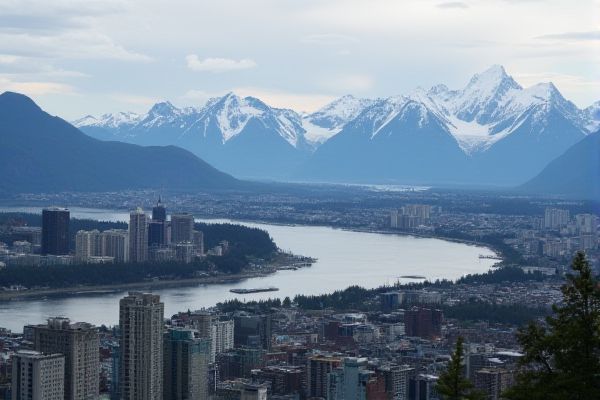
Healthcare facilities in Alaska: Limited specialist availability. Telehealth services prominent. Regional health centers. High healthcare costs. Native health organizations. Remote access challenges. Emergency medical air transport. Anchorage leading hospitals. Health insurance necessity. Seasonal healthcare variations.
Limited specialist availability
Alaska faces significant challenges in healthcare due to limited specialist availability, with the state ranking fourth in the country for Health Professional Shortage Areas (HPSAs) and a projected need for an additional 237 primary care physicians by 2030 to meet growing demand. The situation has been exacerbated by the pandemic, highlighting the urgent need to address these shortages. For more insights, you can read about the comprehensive discussion on the Doctor Deficit in Alaska, a pressing issue that requires immediate attention from policy-makers and healthcare providers alike.
Telehealth services prominent
In Alaska, telehealth services are prominently provided through organizations like the Alaska Native Tribal Health Consortium (ANTHC) and the Alaska Collaborative of Telehealth and Telemedicine (AKCTT), which facilitate remote clinical services, educational programs like Project ECHO, and non-clinical services to improve healthcare access in both rural and urban areas. These services include a wide range of specialties such as audiology, cardiology, mental health, and more, and are supported by state legislation that mandates insurance coverage for telehealth visits. For more detailed information, you can visit their website about Telehealth Services in Alaska.
Regional health centers
The Southeast Alaska Regional Health Consortium (SEARHC) is a non-profit health consortium established in 1975, dedicated to providing comprehensive healthcare services such as medical, dental, behavioral health, and community-based services to residents of Southeast Alaska. With a strong focus on community collaboration and cultural identity, SEARHC operates multiple locations across the region, offering a wide range of healthcare services tailored to the unique needs of its diverse and remote populations.
High healthcare costs
Alaska's healthcare costs are exceptionally high due to several factors, including elevated labor costs, a lack of competition among providers, high Medicaid payments to physicians, and stringent state regulations such as the certificate of need law. These elements collectively contribute to hospital and physician service expenditures being significantly higher than national averages, with hospital services being 50% and physician services 80% more expensive, respectively. For more detailed insights into these issues, you can visit the Alaska Policy Forum, which offers comprehensive reports on healthcare costs in the state.
Native health organizations
The Alaska Area Indian Health Service (IHS) collaborates with numerous Native health organizations, including the Alaska Native Tribal Health Consortium (ANTHC) and Southcentral Foundation, to provide comprehensive health services through 72 tribal health centers, 148 tribal community health aide clinics, and five residential substance abuse treatment centers. These efforts are crucial in serving 163,835 Alaska Natives across 228 federally recognized tribes. To learn more about the extensive services they offer, visit the Alaska Area Indian Health Service website.
Remote access challenges
Healthcare facilities in Alaska are grappling with remote access challenges, driven by factors such as high living costs, harsh winters, and limited connectivity. These obstacles are increasingly being addressed through innovative telehealth solutions, including the provision of internet-connected tablets and cellular service to veterans. Programs like VA Video Connect allow veterans to avoid data charges, playing a critical role in bridging these gaps. Meanwhile, rural areas in Alaska face additional hurdles in telehealth access due to a lack of broadband services and health information exchange capabilities. These issues highlight the urgent need for improvements in infrastructure and policies to bolster telehealth services across the state. Additionally, Alaska's rural communities encounter severe challenges due to restricted road and airport connectivity, and substantial travel distances for healthcare. This underscores the indispensability of telehealth and the necessity for enhanced broadband infrastructure and regulatory support. For more details on how these innovative approaches are being implemented to benefit veterans, visit VA Video Connect.
Emergency medical air transport
LifeMed Alaska provides 24/7 critical care air ambulance services throughout Alaska, utilizing a fleet of advanced aircraft including helicopters and jets. With base operations in multiple locations, [LifeMed Alaska](https://lifemedalaska.com) ensures rapid and high-quality medical transportation for adult, pediatric, neonate, and high-risk obstetric patients.
Anchorage leading hospitals
Providence Alaska Medical Center in Anchorage is Alaska's largest hospital, boasting 401 beds, over 1,190 nurses, and more than 850 physicians. The hospital provides comprehensive services, including a children's hospital, maternity center, heart and cancer centers, emergency department, and mental health services. It holds accreditation from the Joint Commission, ensuring high standards of healthcare. For more detailed information, visit their page on Providence Alaska Medical Center.
Health insurance necessity
Health insurance in Alaska is necessary because short-term health plans, which are the only alternative for some, do not cover essential health benefits, exclude pre-existing conditions, and lack coverage for maternity care, mental health care, and prescription drugs, making ACA-compliant plans or other comprehensive coverage crucial for adequate healthcare access. Additionally, for those not eligible for subsidies or Medicaid, ACA-compliant plans remain the best option despite their higher costs.
Seasonal healthcare variations
The healthcare facilities in Alaska encounter significant challenges due to seasonal variations and geographic isolation. While the healthcare sector remains a stable and growing industry, accessing care is particularly challenging in rural and remote areas. Many communities rely on telehealth solutions and adapted healthcare networks to address these issues. For more detailed insights into the current state of the industry, visit the Alaska Healthcare Industry page.
